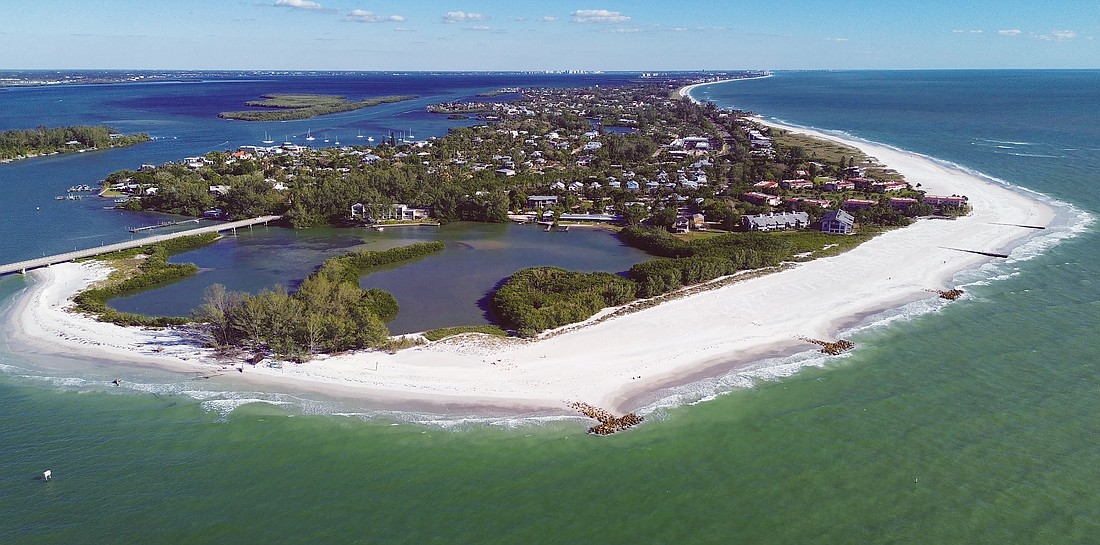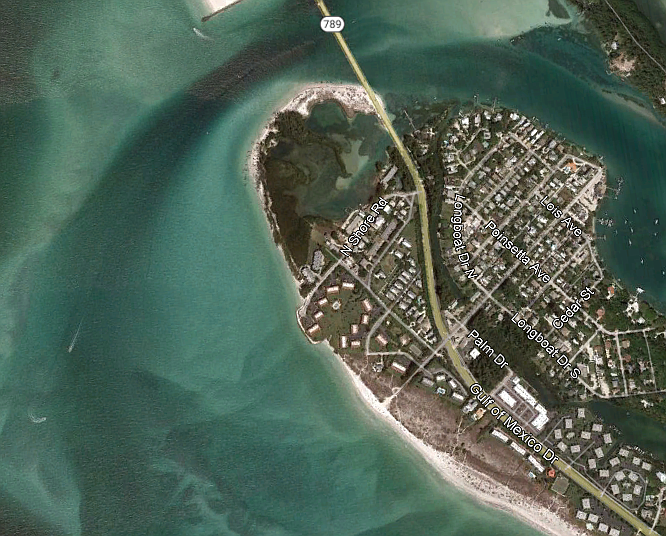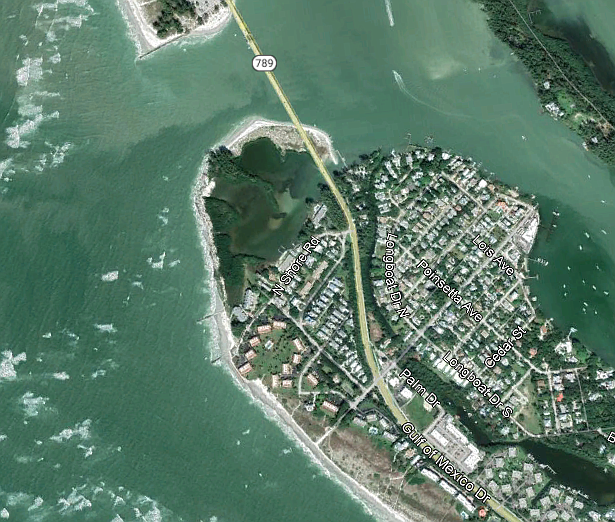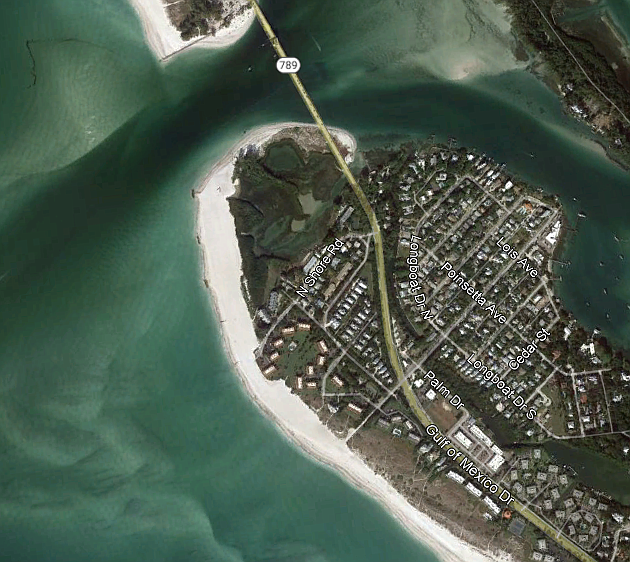- April 10, 2025
-
-
Loading

Loading

Enjoy being able to walk along the north end beach of Longboat Key? Manmade beach groins are probably to thank for that.
Beach structures, like groins, are commonly used to build up and maintain sand on beaches. On Longboat Key, groins play important roles in making sure the beaches are preserved.
“Jetties and groins are built perpendicular to the shore to block the movement of sediment along the shore, hold back currents, protect areas from wave forces, guide sand movement and maintain navigation depth,” according to the Federal Emergency Management Agency.
But Assistant Director of Public Works Charlie Mopps said people often confuse groins and jetties.
Simply put, groins are structures that hold sand in place, whereas jetties maintain a channel’s alignment.
Groins are usually built perpendicular to a shoreline. These structures are then able to slow down sediment naturally carried down the shoreline by waves and also protect areas from wave impacts, according to FEMA.

The north end has a groin field of seven groins, five rock groins and two permeable adjustable groins (PAGs), which are made of concrete.
The PAGs are low-profile and mostly buried, Mopps said. That’s because most of the time the PAGs are collecting so much sand that you can’t see them.
“They’re designed to be very unobtrusive,” Mopps said. “They still allow some sand to bypass around them and through them, which is what you kind of want.”
The two PAGs were constructed in 2014 for a cost of $2.1 million.
Before the town’s 2016 beach nourishment, the north end beach was very eroded and needed sand, according to Mopps.

That project wrapped up in early 2017 and gave the north end some sand to work with. But by the end of that year, storm events wiped out most of the sand that was placed there just a year prior.
Longboat Key voters approved a plan in 2020 for the town to borrow no more than $34.5 million for the town’s comprehensive beach management plan. Of that, about $10 million was used for installing the five groins.
Fast forward to 2021, when the town embarked on a major beach nourishment project that included the installation of the existing groin field on the north end.
Now after two storm seasons, the latest of which included Hurricane Idalia’s storm surge, Mopps said the groins are doing what they’re supposed to.
“They’re really doing a bang-up job on keeping things where we want them,” Mopps said.


Mopps said the price of a groin is hard to estimate since there isn’t a “one-size-fits-all.” Each groin is constructed differently and needs a different amount of materials.
“Typically when you build a groin, you start with what’s called a mattress, which is a rock-filled geogrid structure, and that becomes the base,” Mopps said.
On top of that are armoring stones, usually the large stones someone pictures when thinking of a rock groin.
“The reason why you have to create the mattress is so that those armoring stones don’t just dig themselves into sand,” Mopps said. “They stay at the elevation that your engineering study tells you is the best elevation for that structure.”
In between the larger stones, bedding stones are placed. The density of these smaller rocks is also dependent on engineering studies, according to Mopps.
All of the materials also need to take into account the various conditions that the structures may face, like hurricanes and storm surge. That requires different sizes and densities, which also makes it hard to determine a uniform cost for groins.
Through studies before a groin is designed, aspects like wind and wave design can help engineers determine what happens in different scenarios.
“It takes some pretty big brains with a lot of computer power to come up with what the right solution looks like,” Mopps said.
Mopps described a process that the groin field went through to change design a couple of times to get the product seen today — structures that keep sand on the shoreline but also promote nourishment and natural bypass.